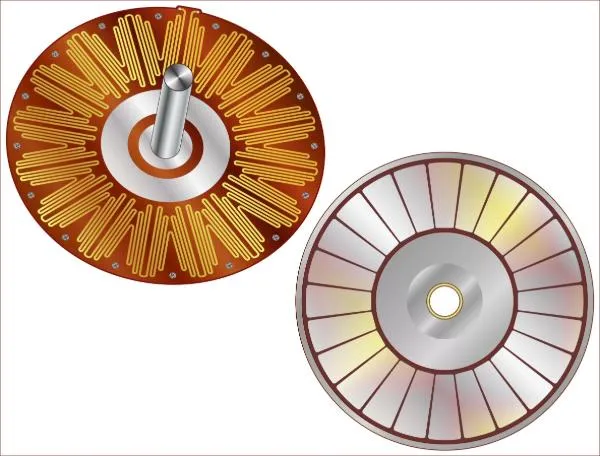
The Evolution of Axial Flux motors
The Evolution of Axial Flux Motors
The axial flux motor, though its origins date back over two centuries, remained overshadowed by radial flux alternatives until 21st-century demand for high-efficiency, compact electric propulsion systems reignited interest in this innovative design.
Axial flux motors trace their conceptual design back to Michael Faraday in 1821. During one of his experiments, Faraday demonstrated electromagnetic rotation by suspending a wire into mercury, which, when voltage was applied, rotated around a magnet. Because the magnetic flux flowed parallel to the axis, this is considered the first axial flux motor, even though it did not have enough strength for practical use. Faraday’s disc generator in 1831, which converted mechanical motion into electrical current via axial magnetic flux, laid the theoretical foundation for motors and generators as we know them today.
It wasn’t until 1889 that Nikola Tesla advanced Faraday’s concepts and patented a motor aimed at improving efficiency and torque compared to the radial flux motors of the time. While Tesla’s patent was not strictly for an axial flux design as we define it today, his innovations addressed key limitations of radial designs and envisioned brushless AC motors capable of precise speed and torque control.
Why Axial Flux Motors Lagged Behind
To this day, radial flux motors remain more popular due to simpler manufacturing processes and material limitations, which established radial flux as the dominant motor topology. Early axial flux motors, with their wedge-shaped stator and rotor segments, required precise alignment to maintain uniform air gaps-a challenge compounded by high centrifugal forces at high speeds. Lamination techniques, which were more effective for radial flux motors, proved inadequate for axial geometries due to complex three-dimensional magnetic flux paths. Grain-oriented electrical steels, which significantly improved motor performance, were not patented until the 1930s and thus could not be integrated into early axial designs.
Another challenge was cooling: axial flux motors tend to retain heat near the shaft, whereas radial flux motors are easier to cool with external fins or liquid cooling channels. The industrial sector of the 20th century was resistant to change; once radial flux motors became established due to economies of scale and existing infrastructure, many automotive and industrial equipment manufacturers were reluctant to adopt a motor that required specialized, more expensive tooling and assembly processes.
Torque Density and Power Efficiency
Axial flux motors excel in applications requiring high torque density and light weight. The torque output of a motor scales with the square of the rotor diameter for radial flux designs, but in axial designs, torque scales with the cube of the rotor diameter. This relationship allows axial motors to deliver greater torque in a smaller physical package, making them ideal for electric vehicles (EVs) and aerospace applications. An axial flux motor can deliver up to four times the power density of comparable radial machines while reducing weight by 50% or more.
The short magnetic flux path in axial motors minimizes core losses and improves efficiency. Some axial flux motors use more copper and even eliminate the core (air core or coreless), further enhancing efficiency.
Compact Form Factor and System Integration
The disc-shaped profile of axial flux motors (sometimes called pancake motors) enables innovative packaging solutions. In EVs, axial motors can be placed directly in the wheel hubs or inside transmissions, saving space for batteries and power electronics.
Modern Materials and Manufacturing
The 21st century has seen significant progress in materials such as soft magnetic composites (SMCs), which allow for complex three-dimensional shapes and can replace traditional steel laminations in some designs. High-strength neodymium magnets provide powerful magnetic fields with smaller magnets, while silicon carbide (SiC) power electronics enable efficient operation at high speeds. These advancements allow axial flux motors to achieve higher power densities and efficiencies compared with traditional radial designs. Combining these innovations with additive manufacturing (3D printing) and precision machining now enables cost-effective production of axial flux components, including automated assembly.
A Future Shaped by Innovation
From Faraday’s rudimentary experiments to Tesla’s visionary patents, axial flux motors have evolved through two centuries of incremental progress. Today, advancements in materials science, manufacturing, and power electronics have overcome the barrier of “that’s the way it’s always been done,” bringing these powerful and efficient motors into applications ranging from elevators to supercars. With growing economies of scale, axial flux stands at the forefront of the electric vehicle and electric motor revolution.
JC
